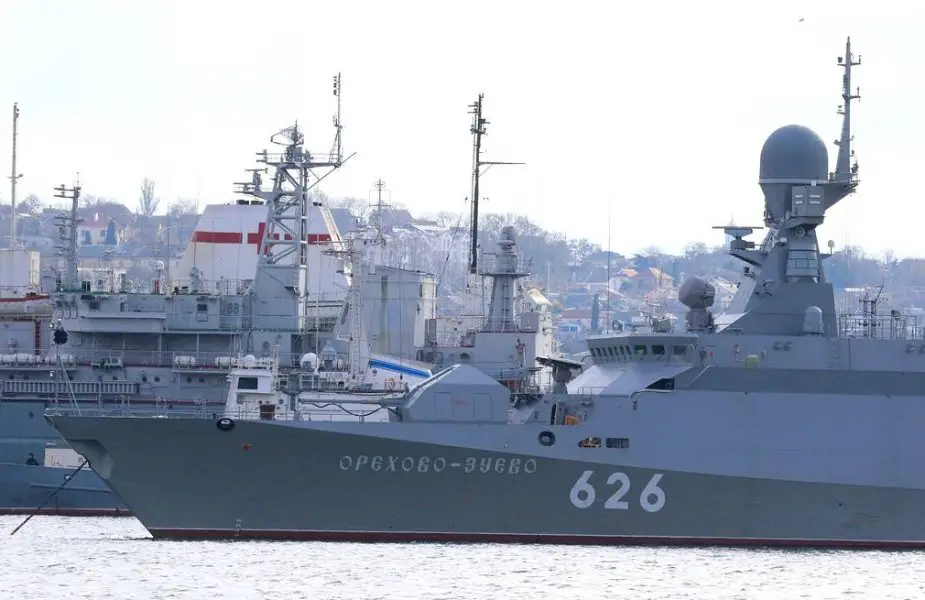Breaking news
Russia resumes construction of blue and green-water warships - take 1.
Russia is resuming the construction of blue and green-water warships after a long break. Expert Alexander Shishkin writes about the warships and their strength in the Vzglyad business newspaper.
 The missile corvette Orekhovo-Zuyevo (Picture source: TASS)
The missile corvette Orekhovo-Zuyevo (Picture source: TASS)
The reports about the scheduled laying of 22 warships and vessels for the Russian Navy in 2020 and the announced handover of six submarines confirm that Russia began to actively renew the Navy. Submarines, frigates, corvettes and universal amphibious assault ships trigger most interest. Let’s consider the plans.
Yasen-M-class SSGN of project 885M leads the list. In 2020, two of them have to be laid while the Kazan and the Novosibirsk have to join the Navy. Another three submarines have to be laid to create two full SSGN divisions (six subs in each) in the Northern and the Pacific fleets and thus restore the multirole component of the nuclear underwater force. Due to the latest trend to produce at least two submarines a year, Sevmash Shipyard can cope with the task by late 2023. Another two divisions can be formed six years later.
Shipbuilding is effective when construction goes uninterrupted. To maintain the skills, another warship should be immediately laid when the previous one leaves the slipway. At present, Sevmash is building 13 submarines, including five Borey-A-class SSBN of project 955A and six SSGN of project 885M. The latest SSBN was laid at the end of 2016 and SSGN in mid-2017.
As a result, a gap of 2.5-4 years appeared and will repeat in Sevmash schedule in seven years (SSBN and SSGN construction cycle) in 2024. It is a big question whether the shipyard (as well as the USC and the Defense Ministry) will fill in the gap.
The Admiralty Shipyard will lay three diesel-electric submarines in 2020. There are no problems with two diesel-electric submarines of project 636.3 for the Pacific fleet. The Magadan and the Ufa are being built. However, the laying of the fourth serial diesel-electric sub of project 677 will happen two years earlier which is unprecedented for modern Russian shipbuilding. The fact can be explained by the above-mentioned principle of uninterrupted construction. Otherwise (without the change of time), the Admiralty Shipyard would have had a two-year break.
The Admiralty Shipyard is one of the best Russian enterprises and produces two submarines a year. It is ahead of foreign competitors in the construction time of diesel-electric subs (close to two years). The enterprise needs orders for subs with air-independent power plants which would make it a world leader in the arms segment. However, even today the Russian shipyards are operating properly and will be able in 12 years to renew and strengthen non-nuclear underwater forces of all the four fleets.
It is a minimum program of one brigade in the Northern fleet (six diesel-electric subs of project 677) and two brigades of the Pacific fleet (12 subs of projects 636.3 and 677) deployed in Vladivostok and Kamchatka. They are necessary to defend SSBN and balance the forces in the Far East (Japan has 19 diesel-electric and non-nuclear subs, South Korea - 16 and China - 55).
It is also necessary to form one brigade of diesel-electric subs of project 677 in the Baltic fleet and Syrian Tartus each. The Baltic fleet needs them to counter growing NATO activities in the Baltic Sea and Tartus has to ensure self-sufficient underwater component of the naval force in the Mediterranean Sea and thus deal with inconveniences created by article 12 of the Montreux Convention.
© Copyright 2019 TASS. All rights reserved. This material may not be published, broadcast, rewritten or redistributed.

























